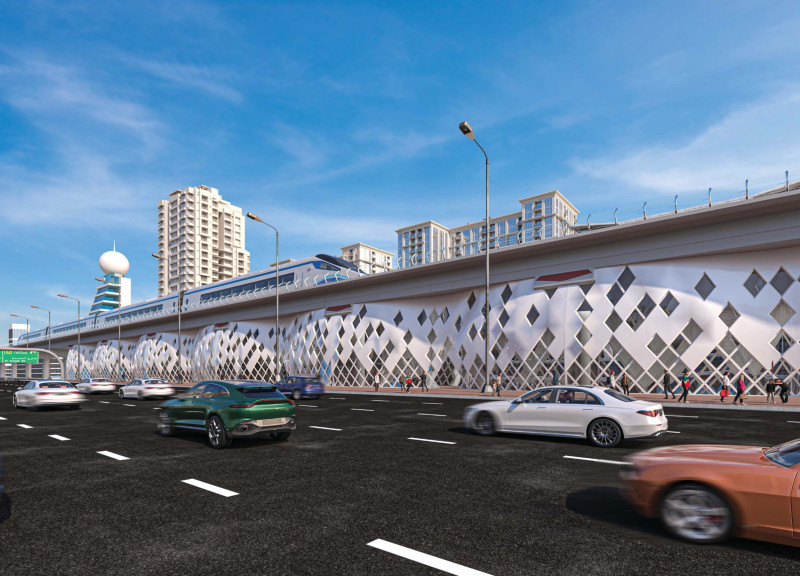5 key facts about this project
At its core, the project emphasizes its primary function, which centers around creating an engaging space for human interaction. Whether it is a residential, commercial, or cultural building, the design deliberately addresses the needs of its inhabitants while fostering a sense of community. This focus on user experience is evident in the arrangement of spaces that encourages movement, social interaction, and accessibility. Each area is carefully crafted to serve specific purposes without compromising the overall flow of the design, demonstrating a balance between utility and aesthetics.
An analysis of the materials employed in this architectural design reveals a thoughtful selection that aligns with its conceptual framework. The use of natural materials, such as wood, stone, and glass, not only enhances the visual appeal of the structure but also reinforces its connection to the environment. For instance, large glass façades invite ample natural light into the interiors, reducing reliance on artificial lighting while offering unobstructed views of the surrounding landscape. Stone accents bring a textural richness that grounds the design in its site, merging the building with its context.
Specific architectural features demand attention and highlight the project's unique approach. The incorporation of green roofs and living walls exemplifies a commitment to sustainability, promoting biodiversity while improving air quality and thermal performance. These features demonstrate innovative architectural ideas that are increasingly pertinent in contemporary design practices, particularly in urban settings where green space is limited. Furthermore, the design of open, flexible spaces allows for versatility, ensuring that the environment can evolve with its occupants' needs over time.
The architectural plans detail how each element interacts within the overall layout, ensuring efficient circulation and accessibility for all users. This careful planning is reflected in the zoning of the project, which recognizes the importance of both private and communal spaces. Architectural sections provide insights into the dimensions and proportions of the various elements, showcasing how natural light penetrates key areas of the building. The thoughtful arrangement of spaces leads to a well-organized experience, enhancing usability and comfort.
The significance of this architectural project extends beyond its immediate functional attributes. It represents a broader trend in contemporary architecture that prioritizes sustainability, community engagement, and the integration of natural elements. The design embodies a vision that transcends mere structure, aiming to create a meaningful environment that resonates with its occupants. Such projects contribute to the ongoing dialogue within the architectural community about the responsibilities of designers in shaping the built environment.
As you reflect on the design's potential, consider exploring the project presentation for more in-depth insights. Engaging with the architectural plans, sections, and design details can further illuminate the innovative approaches taken in this project. This exploration could inspire you to think about how architecture can thoughtfully respond to both human needs and environmental responsibilities, enriching our built environment.


























